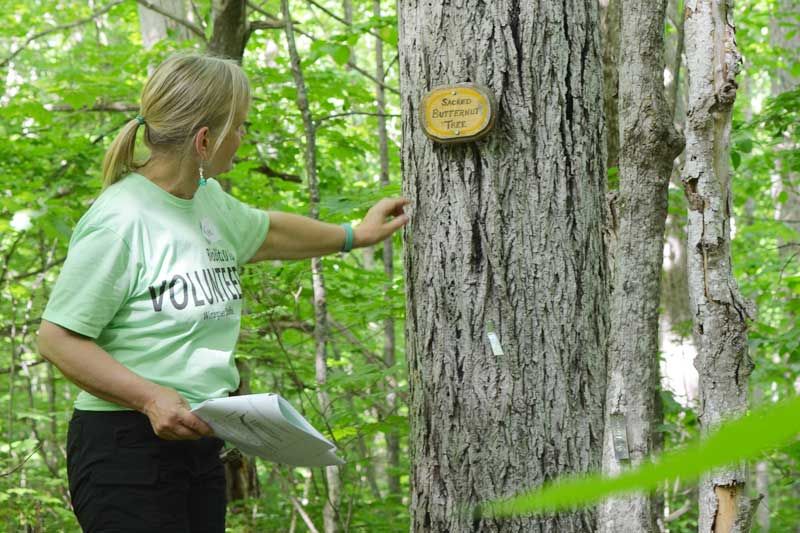Jun 08, 2016
“We weren't sure what to expect,” said Rena Upitis, the director of Wintergreen Studios on Saturday, June 4, as she was entering species onto a log sheet on her computer.
“But this is fantastic, isn't it!” she continued as she looked out over a building full of mostly young people who were listening to and watching the Salamander Man, Matt Ellerbeck, as he showed them some of the salamanders in his collection and talked about the salamanders that can be found in the woods, fields, and water at Wintergreen.
Last year the Kingston Field Naturalists held a 24-hour BioBlitz at Wintergreen and they identified over 1,000 species of plants, insects, and animals on the property.
When they indicated they were not going to come back this year, Upitis thought that maybe there was a way to put on a different kind of BioBlitz.
“The field naturalists are experts, and they had a scientific focus to their blitz. I wondered if there was a way to put the focus on youth and education. So I put up a poster at Queen's in late March looking for students to co-ordinate an event.” Upitis is a professor at Queen's in the faculty of education.
As part of the Queen's education program, student teachers are required to do one “alternative practicum”, a teaching opportunity outside of the normal school environment.
Two students in the department took the bait, and their three-week 'alt-practicum' turned into a three-month project. Kate Belmore and Monica Capovilla did not seem to mind, however, as they shifted gears easily from greeting and registering participants of all ages and darting about the Wintergreen property, gathering materials and supporting the presenters of the many workshops that were given during the two-day blitz.
Over 50 participants showed up on Saturday, and even with the overnight rain a total of more than 80 people spent at least part of the weekend scouring the property, looking for species and attending workshops.
Belmore and Capovilla are about to graduate from Queen's and the experience they have had organizing, promoting and executing the BioBlitz has been a highlight of their time in university.
“This kind of education is something I want to pursue, now that I've seen it in action,” said Belmore. “It might have ruined me for classroom teaching.”
In addition to the salamander workshop, there were workshops on pond life, wildflowers, even a presentation of peregrine falcons from Quebec, all spread out over the two days.
Rena Upitis took the place of Dr. Graham Whitelaw, who had been scheduled to provide a tour of the 20 metre x 20 metre bio-diversity plot at Wintergreen. He had been monitoring the plot but was not able to make it to the event.
The plot is fully inventoried, with tags on all the trees that are more than 10 cm wide as part of an effort to monitor changes over time.
There are plots throughout Canada and the one at Wintergreen includes a number of mature Butternut trees, some that have been somewhat resistant to the Butternut canker, which has devastated the population of Butternuts in Eastern Canada.
There were about 500 species identified at Wintergreen over the weekend, about half as many as in 2015. The identification of species was not the ultimate goal of this year's event, however. Sparking an interest in ecology and biodiversity in 80 people took precedence.
More Stories
- Latest CUPW Job Action Stops Postal Delivery Of The Frontenac News Forcing Alternate Plans
- Opponents of Barbers Lake Gravel Pit Pack Ag Hall in McDonalds Corners
- Bobsleigh Olympian Jay Dearborn At Mikes Pizza In Sydenham
- The Loins Club Of and O'Lakes Roar
- North Frontenac Back Roads Studio Tour - September 27 and 28
- Sunday Market Vendors Give Back
- George Street Work As Town Hall Renovation Nears Completion
- One Way Street Plan Hits A Dead End - Central Frontenac Council, September 9
- Global Gardening
- No Winner Yet in Catch The Ace But Fundraising Target Met

